Fix: Unifi Controller Startup Failed
The Unifi controller software may throw startup failed message due to the lack of free space on your system drive. Moreover, corrupt or outdated installation of Java or the Unifi controller software may also cause the error under discussion.
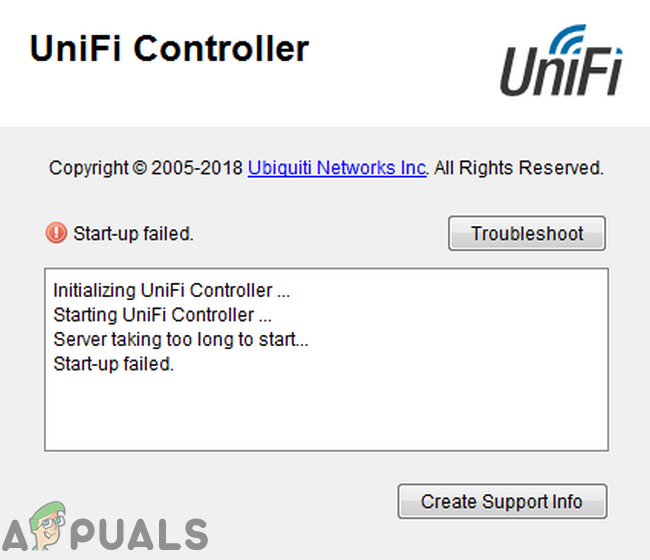
The affected user gets the error when he tries to launch the Unifi controller software. In some cases, the affected user encountered the error when he upgraded Unifi controller software. Some of the affected got the error message after the application is launched for 5 minutes or more. This error is reported by Windows, Linux, Mac, and Raspberry Pi users.
Before proceeding with the troubleshooting process, make sure your network type is either Private or Domain.
Solution 1: Close the Unifi-Related Processes Through the Task Manager
The issue you are encountering could be caused by a temporary software/communication glitch. In this case, killing all the Unifi related processes and relaunching the software may solve the problem. For illustration, we will discuss the process for a Windows PC.
- Close the Unifi controller application.
- Now, right-click on the Windows button and then in the menu displayed, click on Task Manager.

Selecting Task Manager after pressing Windows + X - Now, in the Processes tab, select the process belonging to the Unifi controller software and then click on the End Process button. Repeat for all the processes belonging to the Unifi controller.
- Then end all the processes belonging to Java and MongoD.
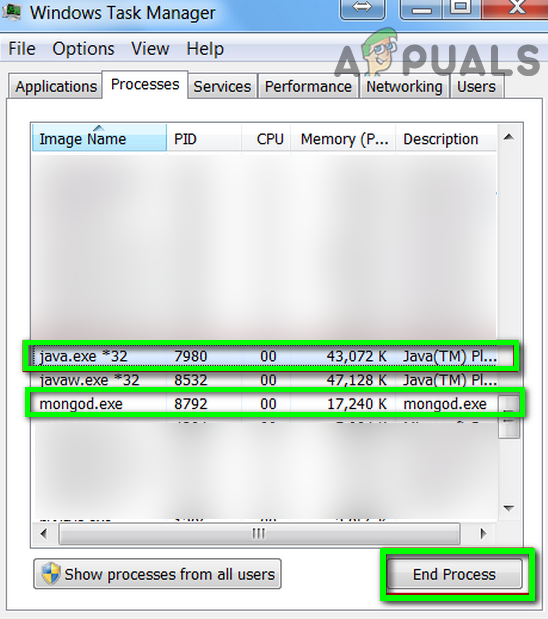
End Java and MongoD Processes - Then launch the controller software to check if it has started to work normally. The application may take a while to load as it will be rebuilding the dependencies.
Solution 2: Empty Space on the System Drive
The Unifi controller software requires some additional free space on the system drive to complete its operation. You may encounter the error at hand if you do not have enough free space available on the system drive. In this context, creating some free space on your system drive may solve the problem. For illustration, we will discuss the process for Windows.
- Free up space on the C drive (system drive).
- Then launch the controller application if it is working fine.
Solution 3: Change the Specified Engine in System Properties File
If the database was created by the ‘mmapv1’ storage engine but the specified storage engine was ‘wiredTiger’, then you may encounter the error at hand. In this context, forcing the controller application to use the mmapv1 storage engine may solve the problem. For illustration, we will discuss the process for a Windows PC.
- Launch the File Explorer and navigate to the installation directory of the controller application. Usually, it is:
%USERPROFILE%\ Ubiquiti UniFi\data
- Now open the System.Properties file with the notepad and add the following line at the end of the file:
db.extraargs=--storageEngine=mmapv1

Open System.Properties File with Notepad - Now save your changes and exit Notepad.
- Then launch the controller application and check if it is operating fine.
Solution 4: Use A User Profile Without Special Characters
Unifi controller is known to have issues when the path to the Ubiquiti Unifi folder has special characters in it because the user profile has special characters in its name (e.g. C:\Users\ÄçìÞôñçò\Ubiquiti UniFi) and thus cause the error under discussion. In this scenario, creating a new user profile without special characters may solve the problem. Keep in mind that you can change the current user name but that will not reflect in the path to the Ubiquiti Unifi folder, so, you have to create a new user account and transfer all the data to that user.
- Create a new user account for your Windows PC and transfer all of your data to it.
- Then, check if the controller software is clear of the error.
Solution 5: Clear the Default Port Required by Unifi Controller Software
The Unifi Controller application requires port 8080 (by default) to operate normally. You may encounter the error at hand if the said port is used by another program. In this case, stopping the program using the said port or configuring the problematic program (or the Unifi Controller application) to use another port may solve the problem. For illustration, we will discuss the process for a Windows PC.
- Clean boot your Windows PC and check if the problem is solved.
- If so, then try to find the program creating the port conflict. You can also change the default port for the Unifi Controller application.
Solution 6: Rename the Unifi Logs
The Unifi controller creates logs (like many other applications) to make the troubleshooting process easy. You may encounter the error at hand if the said logs have corrupted. In this case, renaming these log files (newer log files will be created on the next launch) may solve the issue. For illustration, we will discuss the process for Windows.
- Close the Unifi controller application and kill all its related processes through the Task Manager (as discussed in Solution 1).
- Open the File Explorer and navigate to the installation directory. Usually, the following path:
%USERPROFILE%\ Ubiquiti UniFi\logs\
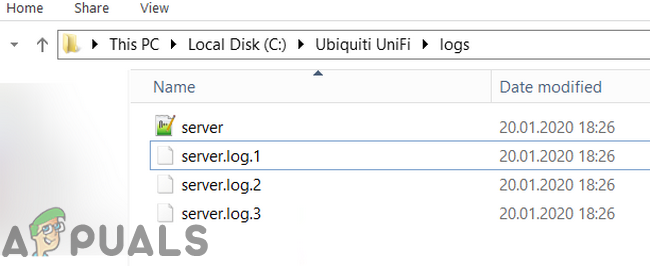
Delete Server Logs - Now rename the log files. Do not forget to rename the mongod and server logs (add .old at the end of the file name extension). Then launch the software to check if the issue is resolved.
Solution 7: Delete the Journal Files in Unifi Folder
The Unifi controller software uses journal files to store different types of data. You may encounter the error under discussion if these journal files are corrupt. In this context, deleting these journal files may solve the problem. For elucidation, we will discuss the process for a Windows PC.
- Close the Unifi Controller software and kill all its running processes through the Task Manager (as discussed in solution 1).
- Launch your File Explorer and navigate to the installation directory of the application. Usually, it is:
%USERPROFILE%\ Ubiquiti UniFi\data\db\journal
- Backup all the files in the folder to a safe location (just in case things do not work).
- Now, delete all the files in the folder and restart your system.
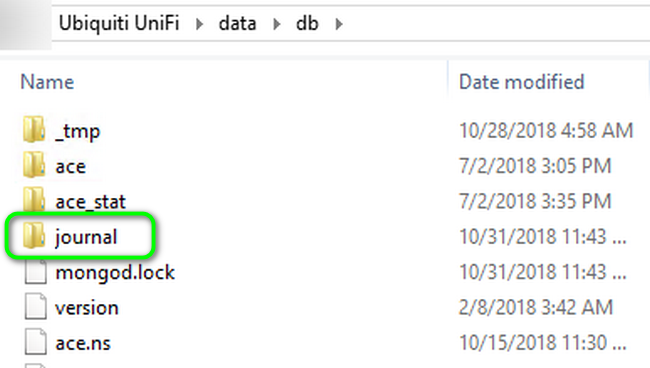
Delete the Files in Journal Folder - Upon restart, launch the controller application and check if it is operating fine.
Solution 8: Install the Unifi Controller Software as A Service
The Unifi Controller software may run into different types of issues if it is not installed as a service. The same could be the reason for the current error as well. In this context, installing the controller software as a service may solve the problem.
- Exit the controller and close all its running processes through the Task Manager (as discussed in solution 1).
- Add the Java path in the environmental variables of the system (at the end of the path in the Temp variable). Usually, it is:
C:\Program Files(x86)\Java\jre7\bin\javaw.exe
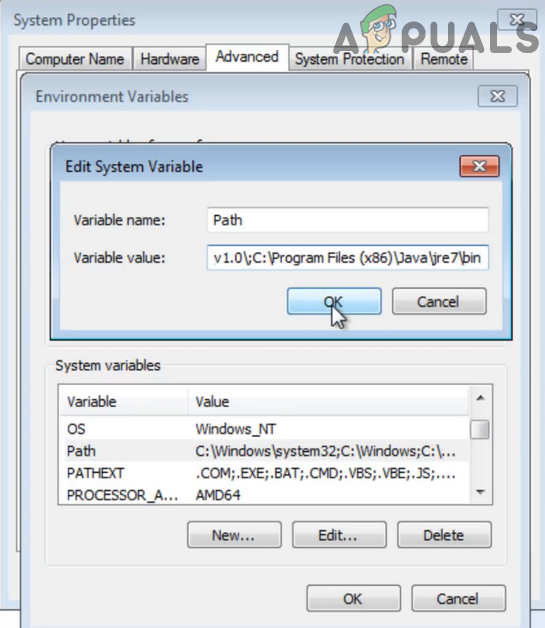
Add Location of Java in Path in the Environmental Variables - Click on the Windows Search box (located at the Taskbar of your system) and type Command Prompt. Then in the list of search results, right-click on Command Prompt and click on Run as Administrator.

Open Command Prompt from Windows Search - Now, type the following command and press the Enter key:
cd "%UserProfile%\Ubiquiti UniFi\"
- Then, in the Unifi directory, type the following command and press the Enter key:
java -jar lib\ace.jar installsvc
- When it says “Complete Installation”, type the following command and press the Enter key:
java -jar lib\ace.jar startsvc

Install the Unifi Controller Software as a Service - Then exit the command prompt.
- To confirm if the “Unifi” service is running, launch the Task Manager and check the services tab for the Unifi service.
- Now access the desired interface IP of the controller and check if the problem is solved.
Solution 9: Update Java to the Latest Build
Java is essential for the operation of Unifi controller software. Java is regularly updated to cater to new technological developments and patch the known bugs. You may encounter the error at hand if you are using an outdated version of Java. In this context, updating Java to the latest build may solve the problem. For elucidation, we will discuss the process for a Windows PC.
- Click on the Windows Search box (located at the Taskbar of your system) and then type Java. Then in the list of results, click on Configure Java.

Open Configure Java - Now, click on the Update tab and then click on the Update Now button (near the bottom right of the window).
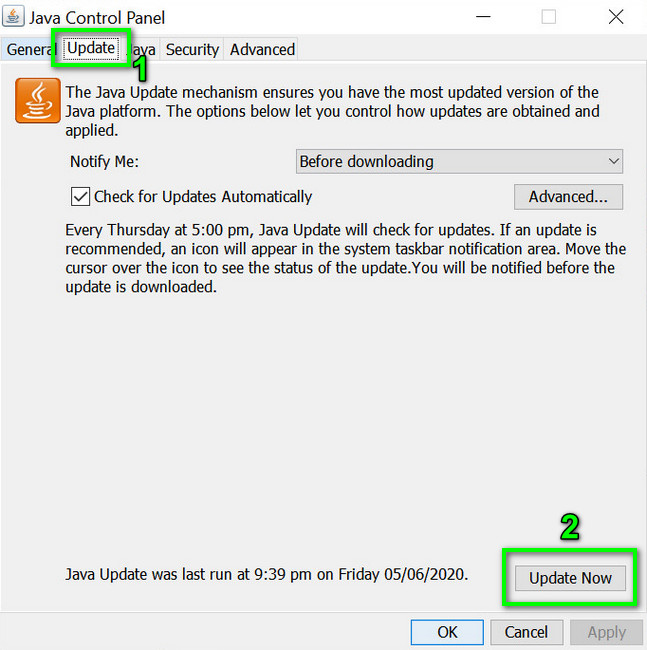
Click Update Java in the Update Tab - After updating Java, check if the Unifi controller software is clear of the error.
Solution 10: Reinstall Java
If updating Java has not solved the issue, then the problem is caused by either the corrupt installation of the Java or incompatible version of Java. In this scenario, uninstalling and reinstalling Java may solve the problem. For illustration, we will discuss the process for Windows.
- Close the Unifi Controller software and all of its related processes through the Task Manager (as discussed in solution 1).
- If the application is installed as service, then uninstall the service.
- Click on the Windows Search box (located at the Taskbar of your system) and type Control Panel. Then in the results list, click on Control Panel.
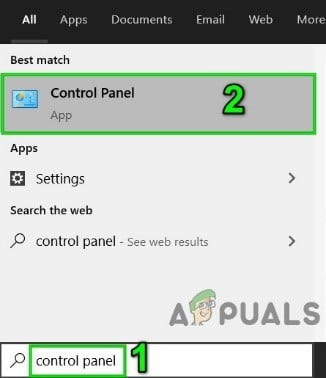
Open Control Panel - Then click on Uninstall a Program.

Uninstall a Program - Now right-click on Java and select Uninstall. Then follow the prompts on your screen to complete the uninstallation process.

Uninstalling the Java Installation - Then restart your system but make sure the controller application does not launch at the startup of the system.
- Now, download and install the latest version of Java (You must install a 64-bit version of Java on Windows for proper operation of Unifi). If you get a prompt from Firewall to allow Java to communicate on the network, allow it.
- Then launch the Controller application and check if it is clear of the error.
Solution 11: Reinstall the Unifi Network Controller Software
If reinstalling Java has not solved the issue, then the issue is caused by a corrupt or outdated installation of the Unifi controller software. In this scenario, uninstalling and reinstalling the controller software may solve the problem. For elucidation, we will discuss the process for a Windows PC.
- Close the controller application and kill all of its related processes through the Task Manager (as discussed in solution 1).
- Launch the File Explorer and navigate to the following path:
%userprofile%\Ubiquiti UniFi\data\backup
- Then back up your config file (.unf file) to a safe location.
- Now click on the Window Search bar on the Taskbar of your system and type Control Panel. Then in the list of search results, click on Control Panel.
- Then, click on Uninstall a Program.
- Now, in the list of installed applications, right-click on Unifi controller software and then click on Uninstall. If you get a prompt saying do you want to keep settings, then click on the No button.

Uninstall Unifi Controller Software - Then follow the prompts on your screen to complete the uninstallation process.
- Then open the File Explorer and navigate to the following path:
%userprofile%\Ubiquiti UniFi
- Now, completely delete this folder.
- Then remove Java as discussed in solution 10.
- Now download and install the latest Unifi network controller software.
- Then restore the configurations from the .unf file (backed up at steps 2 and 3).
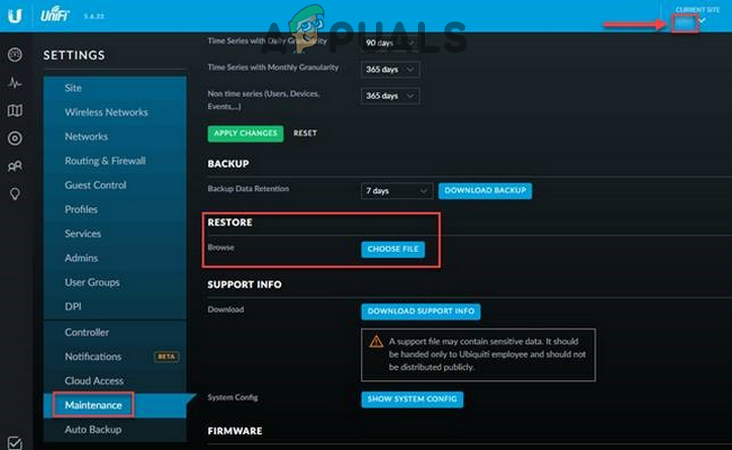
Restore Unifi Controller From the Backup - Now, launch the Unifi network controller software and hopefully, it is clear of the error.




